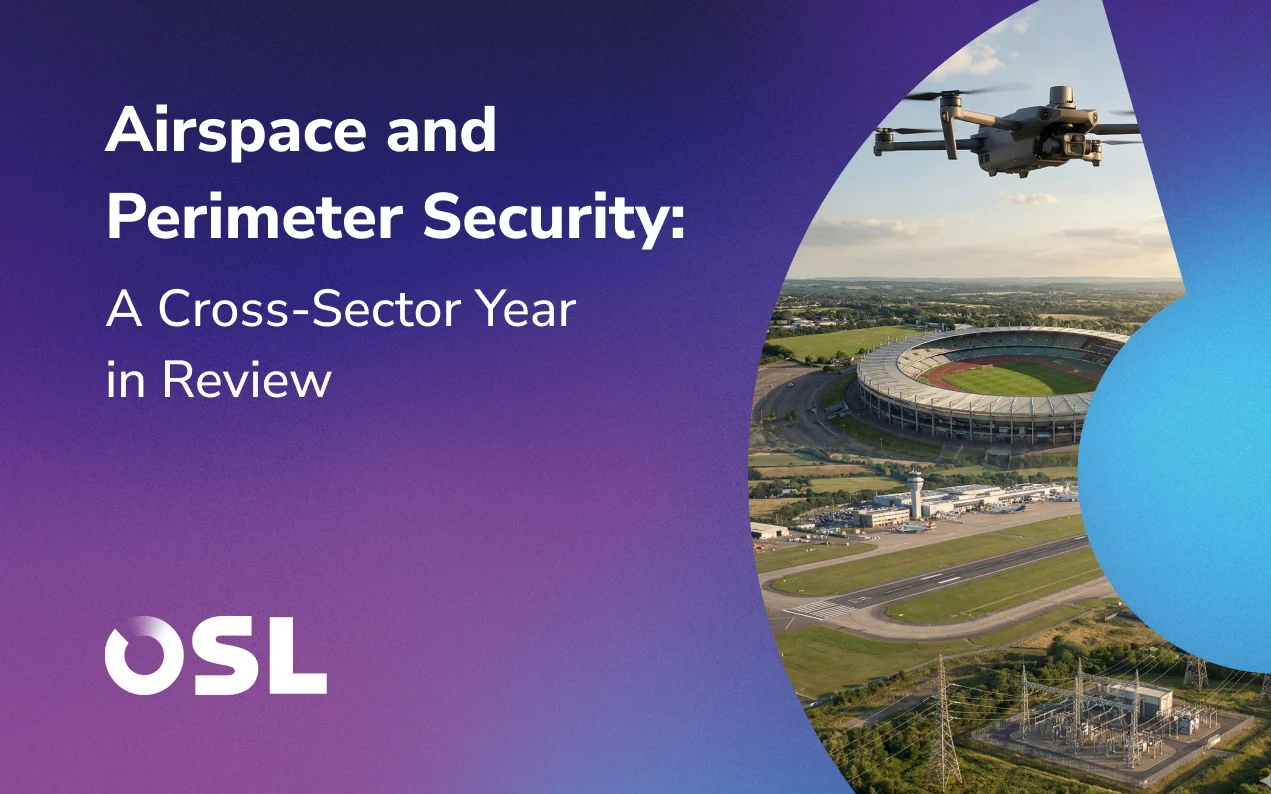Beyond the Library: Why Today's Drones Outpace Legacy CUAS Solutions


Many CUAS solutions in service today depend heavily on predefined databases or "libraries" of known drone types and signals. RF and cyber-based detection systems identify drones by matching communication signatures against these stored profiles. This allows them to detect and categorise familiar commercial platforms with speed and accuracy. For years, this model has been the basis of fixed-site security worldwide.
However, modern drone threats are evolving faster than these legacy systems can keep up. The foundation is now showing cracks. In conflict zones and increasingly in civilian environments, new drone variants are appearing that do not fit neatly into the library model.
Some are heavily modified, altering their communication profiles. Others operate without radio frequency links altogether. As these capabilities move from military to civilian contexts, relying only on library-based CUAS solutions detection creates serious vulnerabilities.
Library-Based Detection and Its Limitations
RF and cyber CUAS solutions identify drones by detecting specific RF protocols, metadata, or device signatures. These drone detection systems track and classify the drone when they find a match, and in some cases, they disrupt it. This is highly effective against common commercial platforms, such as DJI models using standard communication links.
However, the model has an inherent weakness: it can only detect what it already knows. A drone operating on an unfamiliar frequency band or encryption, or following an altered transmission pattern may pass unnoticed. Plus, Non-library drones present critical blind spots that are hard to detect by legacy drone threat detection systems.
New models or homemade platforms that are yet to be added to the vendor's database present an equally critical blind spot. As drone threat detection technology evolves, the gap between library updates and real-world threats is widening. This eventually gives adversaries more opportunities to bypass defences.
New Emerging Threat Categories - The Non-Library Drone Problem
An increasing number of drones are being modified or purpose-built to evade signature-based detection. In Ukraine and other high-threat environments, improvised and altered commercial drones are now routine. They may operate on unusual frequencies or use encrypted drone communications that legacy RF systems cannot interpret.
A notable example is DJI's move to encrypted, dongle-based communication in newer models. This has rendered many previously effective detection methods unable to process or identify the signal. Even if the airframe is recognizable, the communications are effectively invisible to older CUAS solutions. Similar approaches are appearing in activist, criminal, and other non-state operations, signalling that this challenge is not confined to the battlefield.
New Emerging Threat Categories - The No-RF Dependency Threat
Even more challenging are RF-silent drones that emit no radio signals at all. These include fibre-optic tethered drones and fully autonomous pre-programmed drones. Plus, this also includes the platforms controlled through alternative channels such as optical or acoustic links.
Without an RF link, traditional RF-based CUAS solutions cannot detect or jam the drone. This removes both the detection capability and the primary response mechanism. This is not a theoretical concern.
In Ukraine, both sides have fielded fibre-optic drones that use a physical tether to carry encrypted control signals and video feeds. It renders them immune to RF jamming and interception. These drones can operate in heavily contested electromagnetic environments where traditional RF-controlled drones would fail. Their use has been documented in both offensive and surveillance roles. And as the technology matures, the likelihood of seeing it in civilian or homeland security contexts grows significantly.
For sites relying on RF-only detection, these drones may be effectively invisible until they are within visual range, often far too late for an effective response. As this technology matures, modern drone threats like these are likely to appear in civilian and homeland security contexts. This will create serious gaps for CUAS solutions that rely solely on RF detection.
Why Multi-Sensor Solutions Are the Only Viable Defence
While RF and cyber sensors remain important, they cannot alone counter non-library drones or RF-silent drones. Radar systems detect the physical movement of airborne objects, independent of signal emissions. Electro-optical and infrared (EO/IR) sensors provide visual confirmation, behavioural assessment, and long-range tracking capabilities.
When these sensors are combined through real-time fusion, drone threat mitigation becomes far more effective, as they can compensate for each other's blind spots. A layered, multi-sensor approach ensures that if a threat is invisible to RF detection. It can still be identified by its physical presence, movement pattern, or visual profile. This integration also improves classification accuracy, reduces false positives, and supports faster, more confident decision-making in high-pressure environments.
Some modern command-and-control platforms are built specifically to enable this level of fusion. It allows data from radar, EO/IR, and RF to be combined into a single intelligence picture. This allows operators to move beyond detection into verification and timely response, even against drones deliberately designed to evade any single detection method.
Implications for Fixed-Site Defence and NATO-Aligned Forces
The vulnerabilities created by over-reliance on library-based detection are not limited to military operations. Airports, energy facilities, and other critical infrastructure sites face the same risks, particularly if they rely on legacy RF-based solutions without radar or optical layers.
As modern drone threats become accessible to both state and non-state actors, the likelihood of blind spots will continue to increase. Defence planners and site operators must assess whether their CUAS solutions can detect only drones they already know, or they can identify threats that are unfamiliar, RF-silent, or intentionally modified drones.
For NATO-aligned forces and homeland defence programmes, this means prioritising scalable, layered CUAS architectures. These architectures should combine multiple sensor disciplines with AI-driven fusion and real-time operational oversight. Such solutions can adapt to evolving threats without requiring a complete rebuild for each new drone variant or control method.
Conclusion - The Library Is No Longer Enough
The threat environment is evolving faster than many CUAS solutions can update their databases. Though signature-based detection remains useful, but it is insufficient against drones that are autonomous or modified. Protecting high-risk sites now requires multiple sensors working together to detect drones, no matter drones communicate or not. Shortly, in today's environment, multi-sensor integration forms the baseline for safeguarding critical airspace.
Q&A: Understanding the Non-Library Drone Threat
What exactly is a 'non-library' drone?
It refers to any UAV that is not recognised by a CUAS solution's database, because it is new or modified, or operates on a communication protocol the system does not know.
Why do RF-based systems struggle with drones?
RF detection relies on matching known signals or behaviours. Unknown, encrypted, or non-standard protocols or a lack of RF signal can leave these systems unable to identify the drone.
Are non-library drones already operating in real-world scenarios?
Yes. Modified and custom-built drones are widely used in conflict zones such as Ukraine. Plus, encrypted communication protocols in newer commercial drones are already challenging detection in civilian airspace.
Is it an effective solution to update the library or databases?
Updates in the CUAS Solutions can help, but this is a reactive approach. New threats can emerge faster than updates can be developed and deployed. Hence, no update will help with RF-silent drones that emit no detectable signal.
What's the solution to handle non-library drones?
A layered CUAS solution combining radar, EO/IR, and RF, with real-time AI-driven fusion can be a good solution. It allows operators to detect drones based on their presence, behaviour, and signal profile. This reduces reliance on any single detection method.
Editor's Pick
Secure your airspace with adaptive drone defence solutions
Ensure operational safety with multi-layered solutions designed to counter unauthorised drones and protect complex environments.




